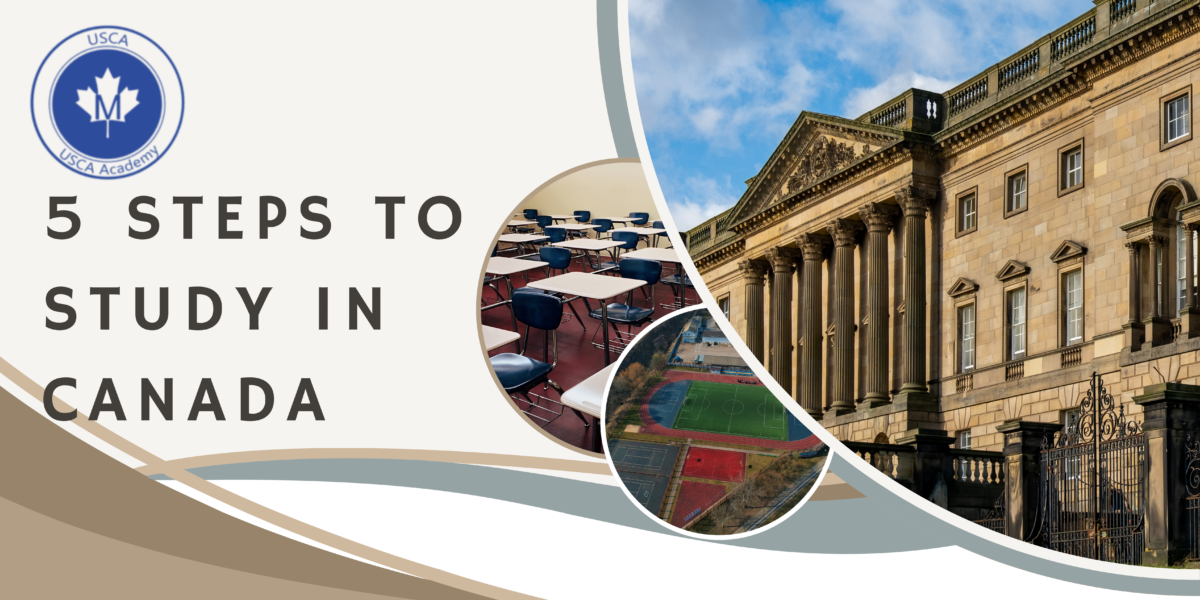Canada is one of the top destinations for international students seeking high-quality education, cultural diversity, and unparalleled career opportunities. The process of moving to another country for education might seem daunting, but with the right guidance, you can navigate it seamlessly. This guide provides 5 Steps to Study in Canada and ensures your journey is both smooth and successful. Let’s dive into these steps that will bring your dream of studying in Canada to life.
Step 1: Choose the Right Program and Institution
Why Choosing the Right Program Matters
The first step in your journey to study in Canada is identifying the program and institution that aligns with your career aspirations and interests. Canadian universities and colleges offer a wide range of programs in fields like engineering, health sciences, business, arts, and technology.
How to Research Programs
- Visit official websites of Canadian universities and colleges.
- Use resources like EduCanada to explore courses and institutions.
- Check global rankings and program-specific accolades to assess their reputation.
Designated Learning Institutions (DLIs)
Ensure the institution you choose is a Designated Learning Institution (DLI), as only these institutions are authorized to accept international students.
Pro Tip:
Reach out to alumni or current students to get insights about the program and faculty. This can help you make an informed decision.
Step 2: Meet Admission Requirements
General Requirements
Canadian institutions have specific admission criteria that vary by program and institution. Here’s what you’ll generally need:
- High school transcripts or equivalent qualifications.
- English or French language proficiency test scores like IELTS, TOEFL, or TEF.
- A Statement of Purpose (SOP) outlining your academic goals and reasons for choosing Canada.
Language Proficiency
If you’re applying to an English-speaking institution, aim for:
- IELTS: Minimum 6.0–6.5 band score.
- TOEFL: Minimum score of 80–100.
French-speaking institutions may require tests like TCF or DELF.
Application Deadlines
Keep track of deadlines to ensure your application is submitted on time. Typically, Canadian institutions have two major intakes:
- Fall (September)
- Winter (January)
Step 3: Apply to Institutions
Prepare Your Application
Once you’ve identified your preferred programs, begin the application process. This involves:
- Filling out online application forms.
- Uploading required documents such as transcripts, language test scores, and SOPs.
- Paying the application fee, which ranges from CAD 100–150 per application.
Acceptance Letter
After submitting your application, the institution will review it. If accepted, you’ll receive an Offer of Admission or acceptance letter. This document is critical for the next step—applying for a study permit.
Step 4: Secure a Study Permit
What Is a Study Permit?
A study permit is an essential document that allows international students to study in Canada. Without it, you cannot pursue your education in the country.
Study Permit Application Process
- Prepare Your Documents:
- Offer of Admission from a DLI.
- Valid passport.
- Proof of financial support (bank statements, scholarships, etc.).
- Recent passport-sized photographs.
- Submit Your Application:
- Apply online via the IRCC Website.
- Pay the application fee (around CAD 150).
- Provide Biometrics and Medical Exam:
- Most applicants must provide biometrics and undergo a medical examination.
- Approval and Travel:
- Upon approval, you’ll receive a Port of Entry (POE) letter. This, along with your visa, will allow you to enter Canada.
Step 5: Prepare for Your Journey to Canada
Arrange Finances
- Tuition fees range from CAD 15,000–35,000 per year, depending on the program and institution.
- Living expenses are estimated at CAD 10,000–15,000 annually.
- Look into scholarships and grants for financial support.
Accommodation
You can choose from:
- On-campus housing: Convenient but limited availability.
- Off-campus housing: Offers flexibility and cost savings.
Travel Plans
- Book your flight to Canada well in advance.
- Familiarize yourself with customs regulations and pack accordingly.
Orientation
Once you arrive, attend orientation sessions to familiarize yourself with the campus and local area.
Benefits of Studying in Canada
High-Quality Education
Canadian universities and colleges are globally recognized for their academic standards and innovative teaching.
Work Opportunities
International students can work part-time (up to 20 hours per week) during semesters and full-time during breaks. After graduation, programs like the Post-Graduation Work Permit (PGWP) allow students to gain Canadian work experience.
Cultural Diversity
With students from all over the world, Canada offers a rich cultural experience that fosters global friendships and networking.
FAQs About Steps to Study in Canada
1. How do I start the process to study in Canada?
Start by researching programs and institutions. Apply to a DLI, secure an acceptance letter, and proceed to apply for a study permit.
2. What are the financial requirements to study in Canada?
You need proof of funds covering tuition fees and living expenses. On average, this amounts to CAD 25,000–40,000 per year.
3. Can I work while studying in Canada?
Yes, international students can work part-time during terms and full-time during scheduled breaks.
Final Thoughts
Following these Steps to Study in Canada will set you on the path to academic success and personal growth. With a well-structured education system, vibrant cultural scene, and abundant opportunities, Canada is the perfect destination for international students.
For more details, visit trusted resources like EduCanada and the IRCC Official Website. Start your journey today and turn your dream of studying in Canada into reality!
For more insights on why Canada is a top choice for international students, check out Study in canada after 12th.
Embark on your path to global education today!






